Comparison of heating types of a country house: options for solving a heating problem
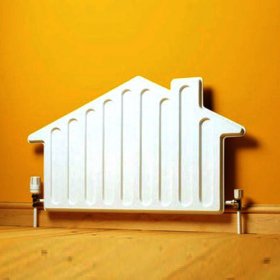
Owning a country house is not only joyful, but also troublesome. Especially if you live there permanently or your visits are not limited to a couple or three times a season. To make such a housing has become a real "fortress", you need to invest a lot of money, physical and mental strength in it. Usually the most global and sensitive issue in the arrangement of a country house is the choice and installation of a heating system. The comfort of staying in “native penates”, the joy of exploitation of the erected building with love, directly depend on its competent decision. Heating a country house can be arranged in various ways, each of which has its own characteristics, advantages and disadvantages. Of which, of course, you need to be well-informed if you set out to establish an effective system that maximally meets your needs and capabilities.
Content
Comparison of systems by type of energy carrier
The most popular are the following types of heating of a country house:
- stove;
- gas;
- diesel;
- electric;
- solid fuel.
Also, more and more interest among homeowners is caused by progressive methods of generating heat - using heat pumps and solar collectors.
Option # 1 - stove heating
Though stove heating Today it is considered to be a relic of the past, in many cases it is it that becomes the only possible and affordable option for heating. This solution is distinguished by relative simplicity and guaranteed absence of problems with fuel. Agree, you can get firewood or wood waste almost always and everywhere.
As for the shortcomings of furnace heating, this is, first of all, cumbersome. The "classic village" design "bites off" a decent portion of the usable living space. But without monumentality, the stove will no longer be a stove, because it is thanks to the walls of impressive thickness that the device is able to effectively accumulate heat to maintain a comfortable temperature in the house.
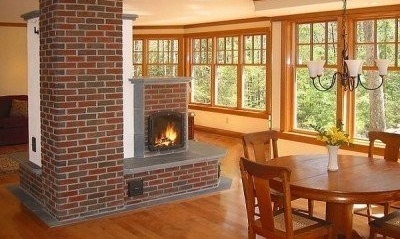
The stove, despite its impressive size, is a good source of heat in the house and a worthy decoration of the classic interior
The walls of the furnace heat up for a long time and cool down for a long time, which means that it will not be possible to quickly change the temperature in the home, especially in the direction of increase. When equipping stove heating in a house, one should be prepared for the fact that you will always have to languish in anticipation of the "first portion" of heat.
A working stove requires constant “monitoring” due to the risk of back draft and burns for children. You can’t automate the construction work in any way, which absolutely does not add to the pleasure of its operation.
As practice shows, with a real possibility and the desire to establish a more practical and efficient system, it is better to refuse stove heating.
Option # 2 - gas heating
One of the most convenient and cost-effective ways to heat a country house is a heating system based on gas boiler. Naturally, if the main gas is brought to the house. Otherwise, try to arrange gas heating can hit the pocket so hard that you can’t even talk about any system payback.
Gasification of a residential property is a procedure that requires not only enormous financial, but also time-consuming. The collection of all necessary documents can take months. Of course, you can relieve yourself of a headache with paperwork by contacting a special service, but then already a considerable amount for gasification is guaranteed to double in size - for “thank you” such offices do not work. And this is just a pipe insert. And if you take into account the cost of a decent boiler and all other elements of the heating system, it is obvious that the idea of gas heating threatens the homeowner with complete bankruptcy.
Alternatively, you can resort to autonomous gasification - install an underground gas tank for storing imported gas or operate cylinders. But such a pleasure can not be called budget.
Note! The operation of the gas tank with insufficient quality installation is extremely dangerous and harmful: damage to the tank can cause a gas leak.
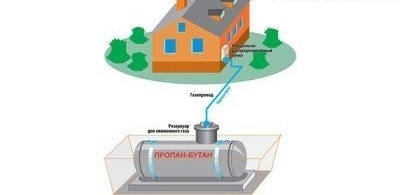
The increase in the security level of the heating system of a country house on the basis of a gas tank and the regulation of pressure in it is facilitated by the installation of a control switchgear
For the happy owners of country houses connected to the gas pipeline, heating a house with a gas boiler is a wise decision, since this equipment has many advantages, in particular, environmental friendliness, efficiency and high efficiency.
The main disadvantage of any heating system that draws heat from natural gas is its high explosion and fire hazard. Natural gas is flammable from any spark even with the slightest leak. therefore gas boiler installation and all necessary commissioning work in order to avoid sad incidents should be carried out exclusively by authorized persons. Periodic Maintenance equipment is a must. And you should not take such “professional examinations” as pumping money - thanks to them, you can prevent a lot of problems.
Option # 3 - heating with diesel fuel
Diesel heating of a country house is a fairly common practice for many, including highly developed, countries. Such a solution, according to experts, is a great alternative to gas heating. True, it can only be considered with a considerable budget. The diesel boiler itself is quite expensive, and this is only the tip of the iceberg: you still need to equip the boiler room, solve the problem of the fuel storage, install the system, and organize a good ventilation system. As a result, a tidy sum runs up. But if there is no way to connect to the gas main, and the house really needs constant high-quality heating and the means allow it, then diesel heating is really a good option. It is effective and safe.
A house served by a diesel installation can be safely left for a long time unattended; It’s enough to visit the boiler house once a quarter.
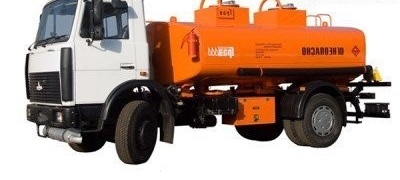
For a liquid fuel boiler to work “like a watch”, diesel fuel must have exceptional quality.Therefore, it is recommended to purchase it only from trusted suppliers.
Problems with fuel usually do not arise - diesel fuel can be delivered even to a settlement remote from civilization. But it is better to choose the maximum volume tanks for diesel fuel - they will have to be filled less often.
Option # 4 - electric heating system
If you are looking for the easiest way to heat a country house, you can turn your attention to electric heating. It does not require large initial financial investments, is environmentally friendly, noiseless, elementary in management, does not require special maintenance. But this is on the one hand. On the other hand, you cannot call it economical, and such an option is far from suitable for every building. Housing area of more than 100 square meters. It is not profitable to constantly heat with electricity, and a house with insufficient wiring power is unsafe.
And heating with electricity is the most expensive way of heating from all existing. Therefore, it should still be considered either as an additional measure, or as a compromise solution for episodic use (for example, if you rarely visit your "suburban possessions").
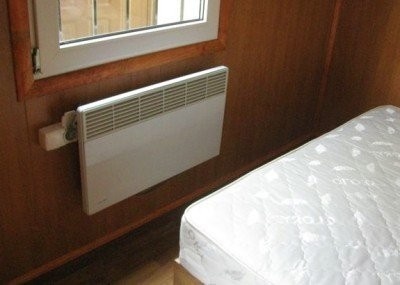
It is possible to organize additional heating in a country house with the help of electric convectors - compact, reliable and unpretentious appliances in the care
For the main heating of the house with permanent residence, electric heating is an absolutely impractical choice. Minimum costs for installation of a heating system based on electric boiler - a very doubtful benefit against the background of fabulous operational waste.
Option # 5 - solid fuel boiler
If electricity is considered the most expensive source of heat, then, of course, there is one that can be called the cheapest. And this is solid fuel. No, it’s not worth immediately imagining the furnace. After all, they exist - solid fuel boilers, allowing significant savings on heating and at the same time not feel in the "Stone Age".
Modern solid fuel heating equipment has good efficiency, safety, environmental friendliness and durability. These units are characterized by "sane" value, which makes them an affordable solution for any person with an average income.
Yes, most solid fuel boilers require manual fueling (firewood, woodworking waste, eurowood, coal, peat briquettes), but this against the general background does not detract from their advantages:
- the ability to receive heat through environmentally friendly renewable resources;
- minimum operating costs;
- extremely rare need for repair or replacement of system elements.
If the need to often service a solid fuel boiler (depending on the type of unit - up to several times a day) does not scare you, you can safely equip a heating system in a country house based on it.
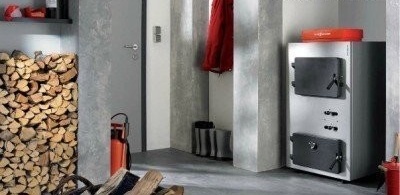
Solid fuel boilers for coal, wood, pellet, as well as multi-fuel, are distinguished depending on the type of fuel used.
Separately, it is worth mentioning such a relatively new kind of solid fuel heating equipment as pellet boilers. Their main advantage over the "brothers" is the maximum automation of the workflow. In pellet boilers, it is possible to program operating modes and maintain the set temperature.
Such units are equipped with a special pellet burner that provides higher efficiency than other solid fuel boilers; they are comparable in efficiency to natural gas powered devices. The fuel supply from the operational hopper is carried out automatically. As long as there are pellets in the bunker, the pellet boiler can work without human involvement (usually up to a week).
The heating system of a country house with wood pellets guarantees complete explosion and fire safety.It does not require any special professional service (as is the case with gas installations). This is a great choice in many ways.
Interesting! If you want to modify the pellets, you can use a conventional universal solid fuel boiler. True, its effectiveness will not be as high as that of the “original”.
Option # 6 - Alternative Energy Sources
We live in a time when the use of natural sources of energy - the sun, earth, air and water - already ceases to seem exotic. Traditional fuels are inexorably becoming more expensive, and this unwittingly prompts to pay attention to alternative solutions for organizing heating. In particular, on solar collectors and heat pumps. True, such development is affordable only for very wealthy people. In addition, given our harsh climate and other realities, it must be objectively recognized that neither heat pumps nor solar collectors can be used as the main (and only) heat source.
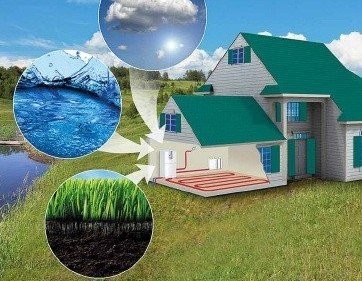
Heat pumps - advanced devices that allow the use of thermal energy of air, water and soil for heating and air conditioning at home, hot water
You can try to “touch the progress” only if you are also ready to invest in one of the traditional types of heating. By the way, from the harmonious “tandem” of alternative and traditional sources of energy, one can ultimately derive considerable benefits. But starting investments in a “promising future” require tremendous.
Additional aspects of choice
Heat carrier - water or air?
According to the type of coolant for country houses, they usually choose water heating, but often stop at air.
Water heating It functions in this way: the water heated by the boiler passes through the pipes and through the radiators (or “underfloor heating”) transfers heat to the rooms. This "classic" has the following advantages:
- the possibility of combining with the DHW system;
- trouble-free installation in an already finished house (although this is fraught with a number of inconveniences, but still);
- relatively inexpensive operation.
Among the disadvantages of water heating, it is worth noting the risk of freezing of the coolant in the cold season and the need for periodic prevention and maintenance of the system.
Air system heats the house according to this principle: the air heated by the heat generator enters the premises through specially equipped channels through the air ducts. The advantages of this type of heating is the possibility of combining it with a ventilation system and duct air conditioning, cleaned with filters and humidified air, as well as the absence of the risk of freezing or leakage of the coolant.
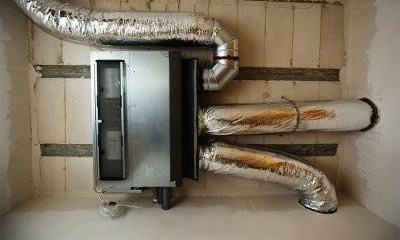
Air heating is an excellent additional measure for country houses with panoramic glazing. It is able to create powerful thermal curtains
Unfortunately, there are also many disadvantages of this solution, among them:
- complexity and high cost of installation;
- the need to design and install the system exclusively at the stage of building a house;
- "Incompatibility" with thick stone walls;
- huge difficulties with making changes to an existing system.
Air heating is an expensive pleasure in any situation. In the installation of such, it makes sense exclusively during the construction of a building with a large number of hollow partition walls. As an independent system, it is rather weak, except for a mild climate.
Therefore, water heating in most cases is a more rational choice.
Volatility is an important point
When deciding on a heating system, it is very important to decide whether you want to see it - volatile or not.
Independent of electricity is natural circulation system coolant (gravitational). This is the main and probably its only plus.The gravitational system has much more shortcomings - this is the need to install pipes of large diameter, which often violate the aesthetics of the interior, and a small "radius of action" (houses with an area of not more than 150 sq. M), and the inability to automatically adjust its operation.
Forced circulation heating system It is volatile, however, it does not take advantages. You can control it both manually and automatically - up to each individual radiator. This contributes to significant fuel savings, which is good news. In addition to the heating circuit, a water supply circuit can be “introduced” into the forced circulation system, warm floor, snow melting systems, which cannot be said about gravitational. Moreover, the "radius of action" of the system is not limited.
How to calculate everything correctly?
Whatever type of heating of a country house you ultimately prefer, remember that only a system that is correctly designed will be effective and economical. For an approximate estimate, it is quite possible to use the standard formula - 1 kW of energy per 10 square meters. m square of the house. But this is only if your housing is really well insulated and the ceiling height in it does not exceed 2.7 m.
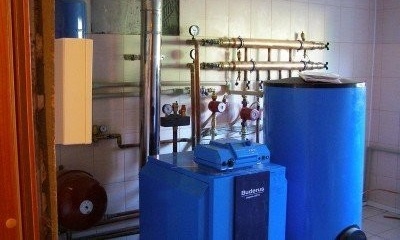
You can fully and quickly calculate the required power of the heating system for a country house using special online calculators
When calculating, in no case can one ignore the presence of a basement, attic, type of windows, and it is also very important to take into account the material from which the house was built. Each of these factors makes its own “adjustments” to the general formula. It is always advisable to add 20-30% of the “margin” to the result obtained. There will definitely not be excess power reserve, but it will allow the equipment to work as successfully as possible and not at the peak of its capabilities.


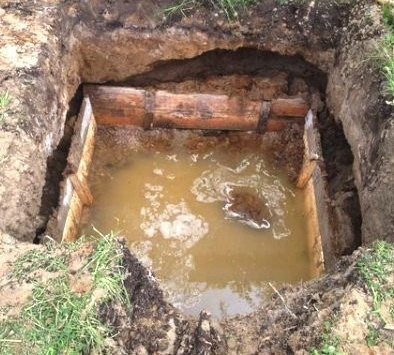
5 comments